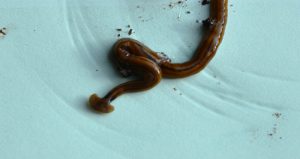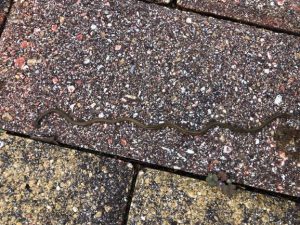
We all know about the fascinating hammerhead shark, with its wide, unusually shaped head, but did you know there may be a different kind of hammerhead lurking in your backyard? Long and skinny, invasive and exotic, the hammerhead flatworm (Bipalium kewense) is a land planarian that has wriggled its way into northwest Florida’s soils. If you ever experimented with planarians in biology class, you may recall that if they are cut into pieces, they can regenerate into new planarians—growing new heads, tails, or even both! One study even showed that a planarian piece 1/279th the size of the original worm could grow into a full organism in a matter of weeks. With this adaptability, it is no wonder they have survived and reproduced in our area.

The hammerhead flatworm is a carnivore and uses its muscular, snakelike body to chase down and capture native earthworms. Once subdued, the hammerhead worm uses a sticky secretion full of neurotoxins to kill its prey. Hammerhead flatworms can grow to a length of 11 inches, and their bodies are generally a light brown with a black stripe down the length. Native to tropical forests of southeast Asia, they thrive in high humidity and the moist soil found under shrubs, leaf litter, and logs. Like other worms, they may surface after heavy rains.
The worms arrived in the United States more than a century ago with the horticulture trade, but only recently have I gotten questions about them from locals. Being invasive exotic species, it is recommended that the flatworms be removed and killed when found, to reduce predation on native worms. Salt and citrus essence are effective methods—just don’t cut them up!
 11
11
